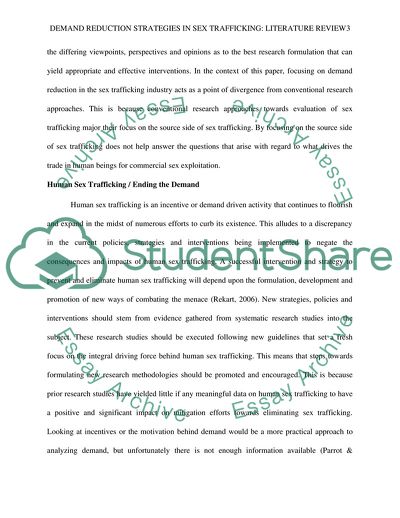Cite this document
(Demand Reduction Strategies in Sex Trafficking Literature review Example | Topics and Well Written Essays - 3000 words - 1, n.d.)
Demand Reduction Strategies in Sex Trafficking Literature review Example | Topics and Well Written Essays - 3000 words - 1. https://studentshare.org/gender-sexual-studies/1803157-brief-review-of-the-literature
Demand Reduction Strategies in Sex Trafficking Literature review Example | Topics and Well Written Essays - 3000 words - 1. https://studentshare.org/gender-sexual-studies/1803157-brief-review-of-the-literature
(Demand Reduction Strategies in Sex Trafficking Literature Review Example | Topics and Well Written Essays - 3000 Words - 1)
Demand Reduction Strategies in Sex Trafficking Literature Review Example | Topics and Well Written Essays - 3000 Words - 1. https://studentshare.org/gender-sexual-studies/1803157-brief-review-of-the-literature.
Demand Reduction Strategies in Sex Trafficking Literature Review Example | Topics and Well Written Essays - 3000 Words - 1. https://studentshare.org/gender-sexual-studies/1803157-brief-review-of-the-literature.
“Demand Reduction Strategies in Sex Trafficking Literature Review Example | Topics and Well Written Essays - 3000 Words - 1”. https://studentshare.org/gender-sexual-studies/1803157-brief-review-of-the-literature.


